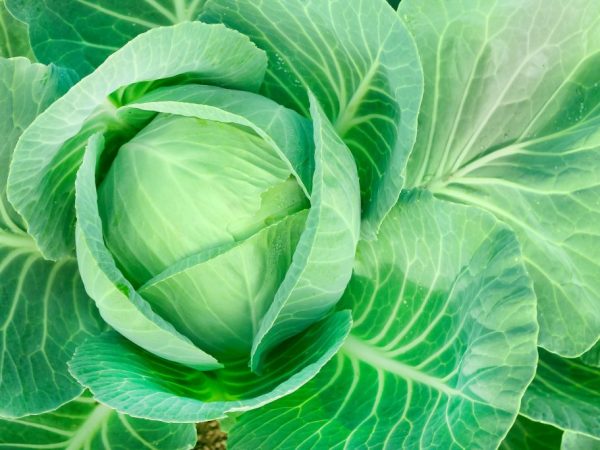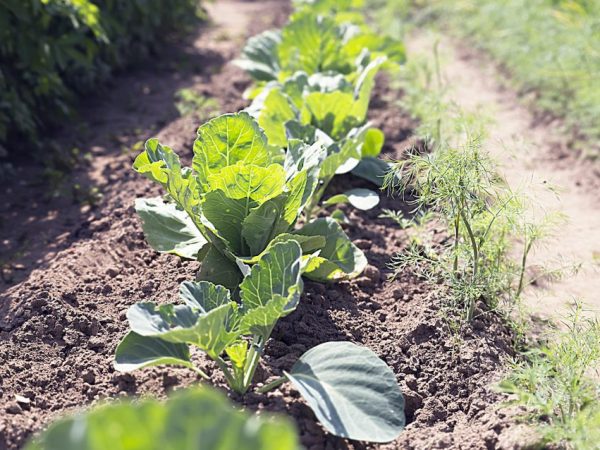Description of Cabbage Explosion F1
One of the early ripening white cabbage varieties is Explosion cabbage. It has a crunchy taste.

Description of Cabbage Explosion F1
Variety characteristic
According to the description, Vzryv F1 cabbage belongs to the category of hybrids. The variety is early ripening and bears its first fruits at the end of July. Planting in the ground takes place at the end of April, and the variety is planted in the greenhouse at the beginning of March.
Variety characteristics:
- a head of cabbage is formed in 80-90 days;
- adapted to growing in different climatic conditions and on different soils;
- suitable both for fresh consumption and for processing;
Cabbage Explosion has high yield rates: about 6 kg per 1 sq. m. This allows you to grow vegetables on an industrial scale.
When stored for a long time, the heads of cabbage do not deteriorate, they tolerate transportation well.
Description of the head
The mass of one fruit is approximately 1-1.5 kg. The shape is spherical. The size of the fruit is medium.
Leaves are light green, with a slight waxy bloom.
The taste of Explosion F1 cabbage is juicy and tender. Most often it is used in borscht, salads. It is great for cabbage rolls and vegetable stews.
Care
Early white cabbage is a light-loving plant. This means that it is important to provide the crop with sufficient light and heat during the growing period. If necessary, you can increase daylight hours with fluorescent lamps.
Cabbage is grown in 2 ways: seedling and ordinary (non-seedling). The first method is most often used.
Seedling
Seeds are sown in mid or late February. Basic landing rules:
- in one hole there can be no more than 3-4 g of seeds;
- after sowing, the grains are sprinkled with a thin layer of soil, half mixed with sifted humus;
- the optimal temperature during the day is 15-18 ° C, at night - 3-4 ° C lower;
- a week before planting in the ground, the seedlings are hardened.
The seedlings are ready for planting when the danger of prolonged cold snaps has passed. To prevent damage to the roots by the cabbage fly during planting, the roots and parts of the stem are treated with lindane in a ratio of 100 g per 1000 g.
Seedless (ordinary) method

It is necessary to protect plants from direct sunlight
If you plant cabbage in an ordinary way, from autumn the soil is fertilized with compost. It grows best after cucumbers, carrots and pumpkins. It is better to sow seeds in a row. The optimal distance is 50 cm. If it is closer, you will have to do thinning.
The depth of the seeds is 1 cm. The soil is covered with wood ash: this is a good top dressing for the plant. Sometimes gardeners cover the seedlings with non-woven material. Its functions:
- protection against low temperatures;
- darkening of the plant from the rays of the sun;
- insect protection.
The nonwoven fabric must not be removed before heading out.
Fertilizers
Explosion f1 is first fed with organic fertilizers. In 1 liter of water add 1 g of potassium chloride, 2 g of ammonium nitrate and 4 g of superphosphate. All components are mixed and left to infuse for several hours. A prerequisite is that the water must be warm. Consumption rate - 1 liter of solution for 1 head of cabbage.
The second feeding is complex. It consists of a mixture of mineral and organic fertilizers.A good top dressing is 0.5 kg of compost, 1 tsp. superphosphate and 2 tbsp. l. wood ash. When digging, all elements are mixed with the ground.
After that, fertilizers are applied 2 weeks after the previous time. There are 2 options for getting ready. First: dissolve 2 tablespoons in 10 liters of water. nitrophosphate. Second: infusion of mullein in proportion to water 1:10.
Watering
There are different watering methods for white cabbage. Each of them has its own characteristics, and is used in different periods of culture growth:
- furrow irrigation is carried out when growing seedlings from seeds;
- sprinkling is used at the stage of intensive seedling growth;
- drip irrigation is used in the growth and formation of the head of cabbage.
High yields can be achieved using a variety of irrigation methods. But the main thing is to achieve an optimal degree of hydration. It is checked for the condition of the soil. If the ground is wet, watering is not yet necessary, if it is dry, add about 1-2 liters of water under 1 head of cabbage.
The best time to water seedlings is in the morning before 10 o'clock or in the evening after sunset. During these periods, water is well absorbed into the soil.
Soil loosening
Early cabbage Explosion F1 loves loose soil. The loosening procedure stimulates growth by enriching the soil with oxygen, improving its structure, and protecting it from weeds and insects.
Loosening is often done with a hoe or hoe. The top layer of soil is removed and then slightly fluffed to increase the flow of air and moisture to the roots.
Pest control
The main pests of this early cabbage variety are the cabbage fly, whiteworm, scoop and cruciferous flea. They appear if mistakes were made in leaving.
Cabbage fly larvae gnaw at the roots of young plants. It begins to turn yellow and gradually dies. To neutralize this pest, the seedlings are treated with lindane. Dosage - 100 g of solution per 1 sq. M. Then it is treated with metaphos, but this is done only after 10 days.
Hare caterpillars can also harm cabbage. They gnaw on the leaves. They are fought with the help of irrigation of a vegetable with metaphos: 150 g per hundred square meters.
The cabbage scoop is a butterfly that destroys the underside of the leaves and then moves to the head of cabbage. The plant is treated with Binoram until the head is formed. For 1 liter of water you need 150-200 ml of fungicide. For 1 sq. m plantings require about 10-15 liters of solution.
The cruciferous flea damages young leaves, they dry out and die. It is best to spray them with lindane at a dose of 150-200 g per hundred square meters. Processing is carried out 2 times in 4-5 days. It can also be treated with a 0.12% metaphos solution.
Conclusion
The variety of cabbage Explosion has many advantages: resistance to disease and climate, high content of minerals and vitamins. It is suitable for long-term transportation and storage under proper conditions.


